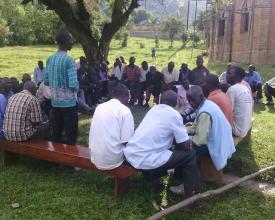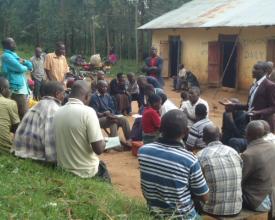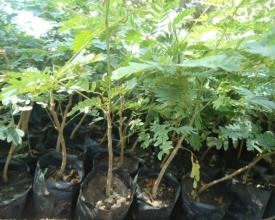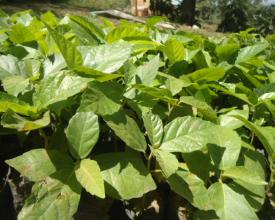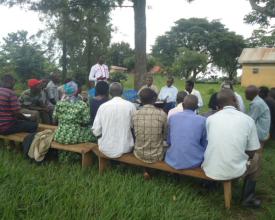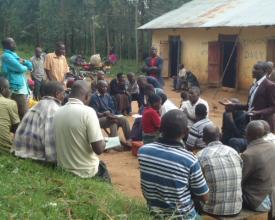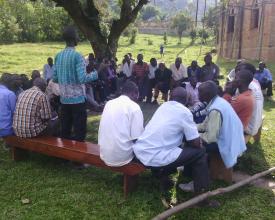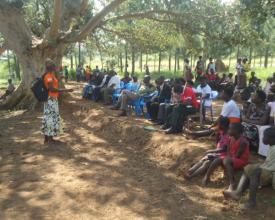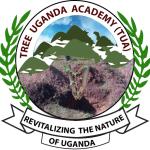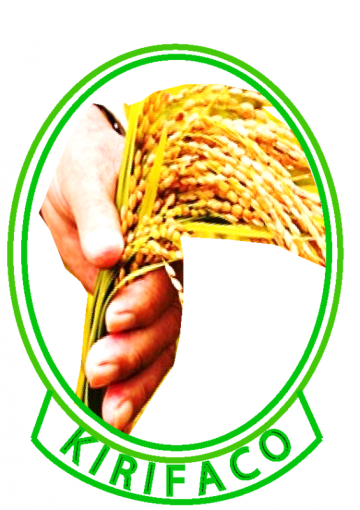
Innovation for Community Engagement in Conservation and Poverty Alleviation (ICECOPA)
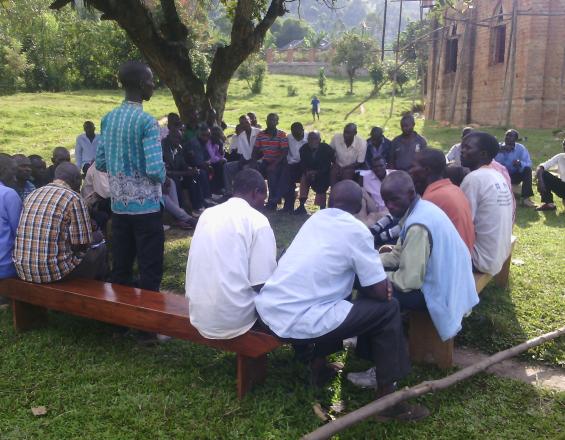
Innovation for Community Engagement in Conservation and Poverty Alleviation (CECOPA) is an inclusive project being implemented under Tree Uganda Academy (TUA). Tree Uganda Academy is an Eco-inclusive, social action, Research and advocacy Community Based Organization established in July 2017, with an aim of making improvements in Environmental Sustainability and People's welfare.
Therefore we empower and work with community members to fight against the increasing destruction of Ecosystems, Poverty and Climate change.
ICECOPA project (my Solution), is being applied through Formation of Tree Academy Groups (TAGs) at Parish level under the Village Savings and Loan Association (VSLA) Model, and Tree Academy Clubs (TACs) in Schools. We capacity build community members in their respective Groups and Clubs, equip them with conservation knowledge and Skills as well as provide means of access to essential ecosystem services to better involve them in problem solving and ensure climate justice.
Contexte
Challenges addressed
1. Increasing destruction of ecosystems due to poor agricultural and other human activities such as intensive cultivation, lumbering, bush burning, charcoal burning, swamp reclamation and industrialization. All these have reduced the vegetation cover of the region and led to a fall in the amounts of rainfall that we initially received in the region and consequently an increase in the atmospheric temperatures.
2. Lack of Climate Justice: there is discrimination and unfair treatment of people in the creation and implementation of policies and projects that address Climate Change. This is the basis for the formation of Tree Academy groups and clubs to ensure inclusiveness.
3. Increasing Poverty and food insecurity: the land is no longer productive to support bountiful Agriculture on which the majority (75%) depends for their survival in terms of food and income needs.
4. Increasing threatening of plant and animal diversity due to lack of awareness.
Emplacement
Traiter
Summary of the process
The conservation information dissemination and the art performed during music, dance and drama competitions are put into practice at group level through tree planting, advocacy for climate justice and biodiversity conservation as well as creation of alternative sources of income, to avoid poaching and other environmental crimes in search for money.
Steps:
1. Information dissemination through Music Dance and Drama competitions among member groups (TAGs)
2. Effective strategies set through group meetings to achieve environmental sustainability and approaches to properly account for the true full value of linked ecosystems and environment resource use.
3. Increasing the efficiency with which we use the most endangered species and elements.
4. Practical engagement in conservation activities such as tree planting rehabilitation of protected areas and habitats.
Building Blocks
Tree Academy Groups (TAGs)
Tree Academy Groups (TAGs) are grassroot community led groups of people, formed at parish level under the Village Savings and Loan Association (VSLA) model, championing conservation.
We form these groups to build on social networks to spread support, commitment and changes in social norms and behaviours.
To build local capacity to identify and address community environmental needs.
To strengthen capacity for shifting of power balance so that the community gains a voice in decision making, increased access to information and services while addressing many of the underlying social causes of their vulnerability (discrimination, poverty, low self-esteem and self –efficacy, low social status, violence etc).
To mobilize local and external resources to address the issue and establish coordination and monitoring systems to ensure transparency, accountability, and effective management of these resources.
To motivate communities to advocate for policy changes to respond better to their real needs.
To link communities to ecosystem services, helping to define, improve on, and monitor quality of care from the joint perspectives of community members and service providers, thereby improving availability of, access to, and satisfaction with ecosystem services.
Enabling factors
Willingness by community members to organise themselves into groups.
A better political environment and government policies that allow people to form associations and unions.
Access to information, guidance and advice provided by Tree Uganda Academy.
Increasing climate change and the demand by government to engaging everyone in the conservation programs.
Lesson learned
1. Programs that carry out all of the community mobilization steps but do not embrace its values and principles will not empower communities to achieve lasting results. They may also run the risk of setting poor precedents that leave communities feeling co-opted, manipulated, and reluctant to work with external organizations in the future.
2. When communities do not develop the skills necessary to leverage their own resources, the problem arises when the external support comes to an end and members refuse to work on their own because future programs cannot or will not meet the established expectations.
3. It is a challenge to develop/adapt and document in a user-friendly way a methodology that any facilitator can pick and use, manuals that serve to provide guidance on how to facilitate each phase of the action cycle.
4. Through their participation in the process, communities establish necessary organizational structures and relationships, and people develop their knowledge, skills, social support networks, and ability to access and manage resources to sustain and improve their lives.
Music, Dance and Dramma
Information on conservation and better farming methods is being disseminated through Music, Dance and Drama.
Our philosophy is that music speaks to to Soul and in doing so, attitude change will be achieved.
Enabling factors
1. Tree Academy Groups are in place to do practice and carry out music, dance and drama competitions on conservation.
2. Access to relevant information on the cultural history of the area.
3. Availability of Music, dance and drama equipment and costumes.
Lesson learned
1. Drama and the performing arts allow an avenue to develop cognitive abilities that complement study in other disciplines. For example, drama students learn to approach situations in an array of different manners which can help to develop creative thinking and new study techniques. Further, it builds confidence which benefits public speaking opportunities.
2. Communication between peers is accelerated as students are exposed to group activities. This experience also provides opportunity for students to display cultural leadership qualities.
3. Students gain important life skills as they learn the value of critical feedback, both positive and constructive.
4. Children have the opportunity to celebrate the richness and depth of human expression in all of its forms. Through creative expression students learn to comprehend our world better and are therefore better equipped to navigate the challenges they might be faced
5. The Arts can also be a source of solitude – a place where a child is able to shut out its surrounding and immerse itself in a creative environment.
Impacts
1. Existence of community led groups of people (Tree Academy Groups) involved in practical conservation, advocacy for Climate Justice and income generating activities especially Tree Planting and Village Saving and Loan Scheme.
2. Skills Development by community members as a result of trainings and capacity building provided for all Tree Academy Groups on micro enterprise generation, Biodiversity conservation, waste management and sustainable agriculture.
3. Restoration of the Vegetation cover and threatened Tree Species in some areas and improvement of some protected areas and habitats in the region.
4. Attitude change: A spirit of conserving the environment has been instilled in both the young generation and community members through awareness creation and community capacity building and the number of people championing conservation has increased.
5. Increased Agricultural Production due to adoption of better farming methods by community members.
6. Increased Entrepreneurship: Adoption of other projects as alternative sources of income such as Waste recycling, Tree Nursery managenet and tree planting.
Beneficiaries
- South Western Uganda crop and animal farmers.
- All young men, women and the youths who are employed by the Project.
- Pupils and students by gaining knowledge and skills in conservation projects.
- Plant and animal diversity.
Sustainable Development Goals
Story
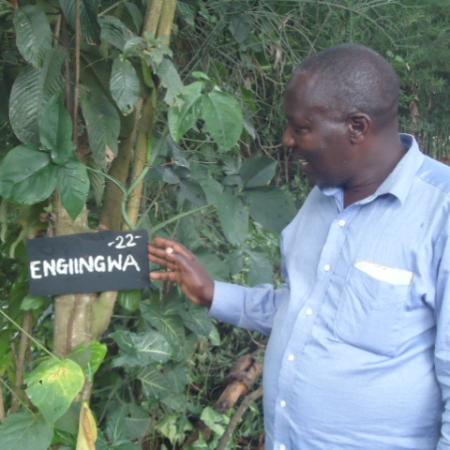
When we see the benefit something brings, we take care of it.
That’s why we surfers baptising trees and animals like newly born babies to make them known and preserve their importances for the next generations.
And it’s why in Uganda, Kigezi region in particular mountain gorilla numbers are increasing and plant diversity being restored.
Tourists come to Uganda to catch a glimpse of these magnificent creatures. The tourists mean money, jobs and a better standard of living for nearby villagers. Because the gorillas are such an important resource, local people are committed to protecting them.
It’s just one example of how we’ve helped local communities around Bwindi and Mgahinga National Park in Kanungu to benefit from conservation. By looking after their own natural resources, people all over the world are improving their own lives – and making our shared vision of a world where humans live in harmony with nature a reality.
What’s at stake?
Mountain gorillas are one of humanity’s closest relatives, sharing as much as 99% of our DNA. But over the years, much of their forest habitat has been destroyed. Poaching has also taken a heavy toll.
Mountain gorilla habitats are protected in national parks, but this alone cannot guarantee their survival. In a region like Kigezi wracked by ignorance and poverty, the people living near mountain gorillas have difficulty meeting even their most basic needs like food and fresh water.
Residents rely on the land for agriculture and animal grazing. As humans encroach on the forest, the gorillas’ habitat and plant diversity shrink further.
Only with the support of local communities will we secure a future for gorillas and local tree. And it’s not just about gorillas and localtrees: community-led conservation has a vital role to play.
The story so far
One of the biggest lessons we’ve learned over the last year is that conservation works best when local communities actively participate. Rather than protecting nature from people, we look for practical solutions that allow humans and other species to thrive together.
Our work with tree species and mountain gorillas in Bwindi and Mgahinga NationalPark shows just how successful this approach can be.
What next?
We involve local people in all our conservation work, and we’re looking to replicate the success of our community-led conservation projects in other areas.

